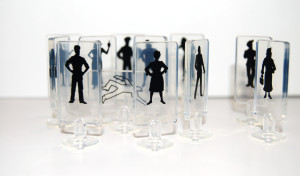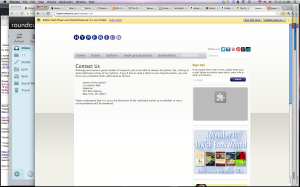The Lessons *I* Think I Was Teaching

Photo by Iwan Beijes
In part 1 of this post, I referred to the “story-behind-the-story” news releases I learned to write after reading Jeffrey Lant’s Cash Copy. So here’s the story behind the story of Part 1: the lessons I hope you come away with.
First, of course, are the obvious messages: John Corcoran and his readers prepared a good resource, and reading those books can provide you with new skills and insights. And the two books I added to the list provided ME with important skills and insights.
But I’m a marketer. There’s a deeper psychology here. I believe in transparency, so I’ll step you through the goals I had in posting this, and the action steps I took to meet those goals—so perhaps it may influence the way you craft your own messages:
- To introduce myself to—and build and nurture a relationship with—John Corcoran. I build relationships with many people who have a network I want to be part of, and who I’d like to see me as a colleague whose expertise complements theirs. This is my first communication to him. I got on his list a few weeks ago after listening to a webinar he did with one of his marketing partners. As far as I know, he doesn’t subscribe to my newsletter, doesn’t know me from any of the discussion lists I participate in, hasn’t heard me speak or read any of my books. Thus, I’m assuming it’s a cold contact.
- To introduce myself to his community in ways that may spark interest in my books and/or consulting and copywriting services
Notice how I work toward those goals as I:
- Complement him on the resource he put together, right in the very first paragraph
- Mention that I’m a business book writer—thus positioning myself as someone it makes sense to pay attention to, since he pays attention to all these other business book writers—and an addicted reader who consumes business books, and thus a natural member of his community
- Show that I’ve taken the next action step: listening to his podcasts and naming the first one I played; I’m engaging with his material and psychologically rewarding him for making the resource available
- Add two new books that no one has mentioned, along with the reasons why I recommend them—and in those reasons why, I begin to reinforce, not just to John but to anyone else reading this page, the idea that I’m a creative, problem-solving marketing guy that people could turn to for new approaches to marketing (notice how I mention that the example was from work I did for a client)
- By citing the year I first read Lant’s book, show that I’ve been in this world for decades
- By using the “we we we all the way home” reference, show that I have a sense of humor and a knowledge of cultural references
- Provide direct value in the post, by suggesting (without selling and without hype) and giving an example of story-behind-the-story copywriting and mentioning that going green/solving the world’s biggest problems can be a formula for profitable, successful business
- Reference the relevant book I have out, and the one that’s coming out soon
- Make a direct offer to John: the gift of an advance copy (of course, I’m hoping he will recommend it to others)
- Tell him to expect a private email from me, so when he sees it, he’ll open it
- Finish with the most relevant of my website URLs, so anyone else whose attention I caught can easily track me down without having to do a search
Incidentally, this transparency extends to my outreach to John. When I send my private note, I will include the links to these two posts so he can see how I used my post on his site as a case study for you. 😉




